Everything you need to know about installing a car charging point – according to pro electricians
Car charging points are one of the most valuable additions you can make to a home, experts say
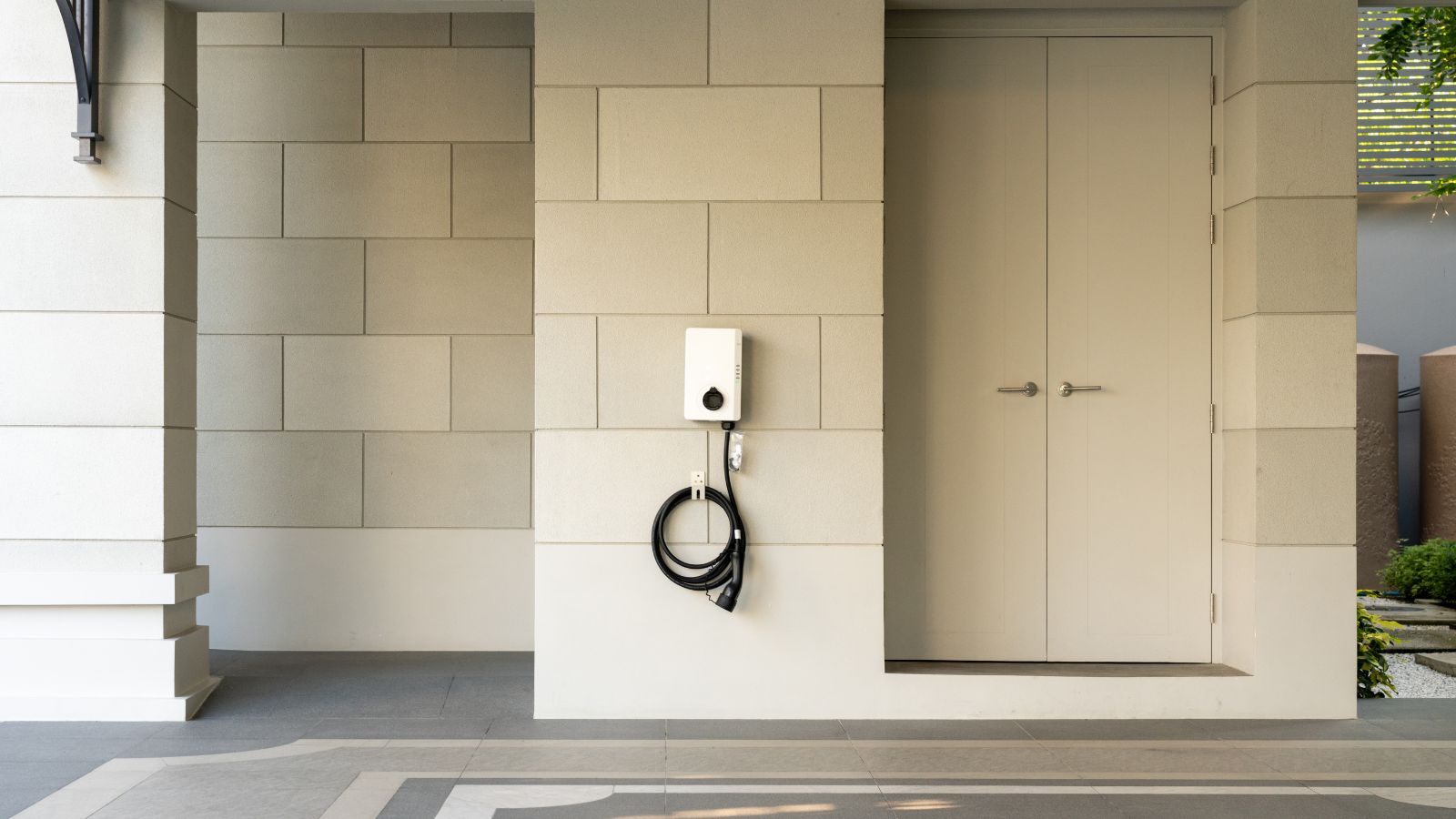

Electric cars are becoming increasingly popular and the rise in the number of charging points across the country means the network is getting stronger.
However, it's still far easier and cheaper to charge up at home. We spoke to experienced electricians about about the key things to consider before installing one at your home, including location, cost and the electrical load on your home.
Here, professional electricians reveal everything you need to know about installing a car charging point to help you make the most informed decision about this feature which adds value to your home.
Everything you need to know about installing a car charging point
So far as eco-home improvements go, car charging points are some of the least disruptive to install in comparison to things like heat pumps or solar panels. That is not to say that it is a simple process, however, and you need to work closely with your installers for the perfect results.
So far as the installation goes, Joel Worthington, president at Mr. Electric, a Neighborly company explains, ‘A location for the charging point is selected. Electricians should run wiring from the electrical panel to the charging location and install a dedicated circuit for the charger. The charger is mounted to the wall or stand and the electrician will connect the wiring. After the system is installed, a test should be conducted to ensure everything is working as it should.
‘There may be more electrical work needed depending on the current state of the electrical system in the home,’ he adds. ‘Some homes may require a panel upgrade and additional electrical needs.’
Costs of installing a car charging point
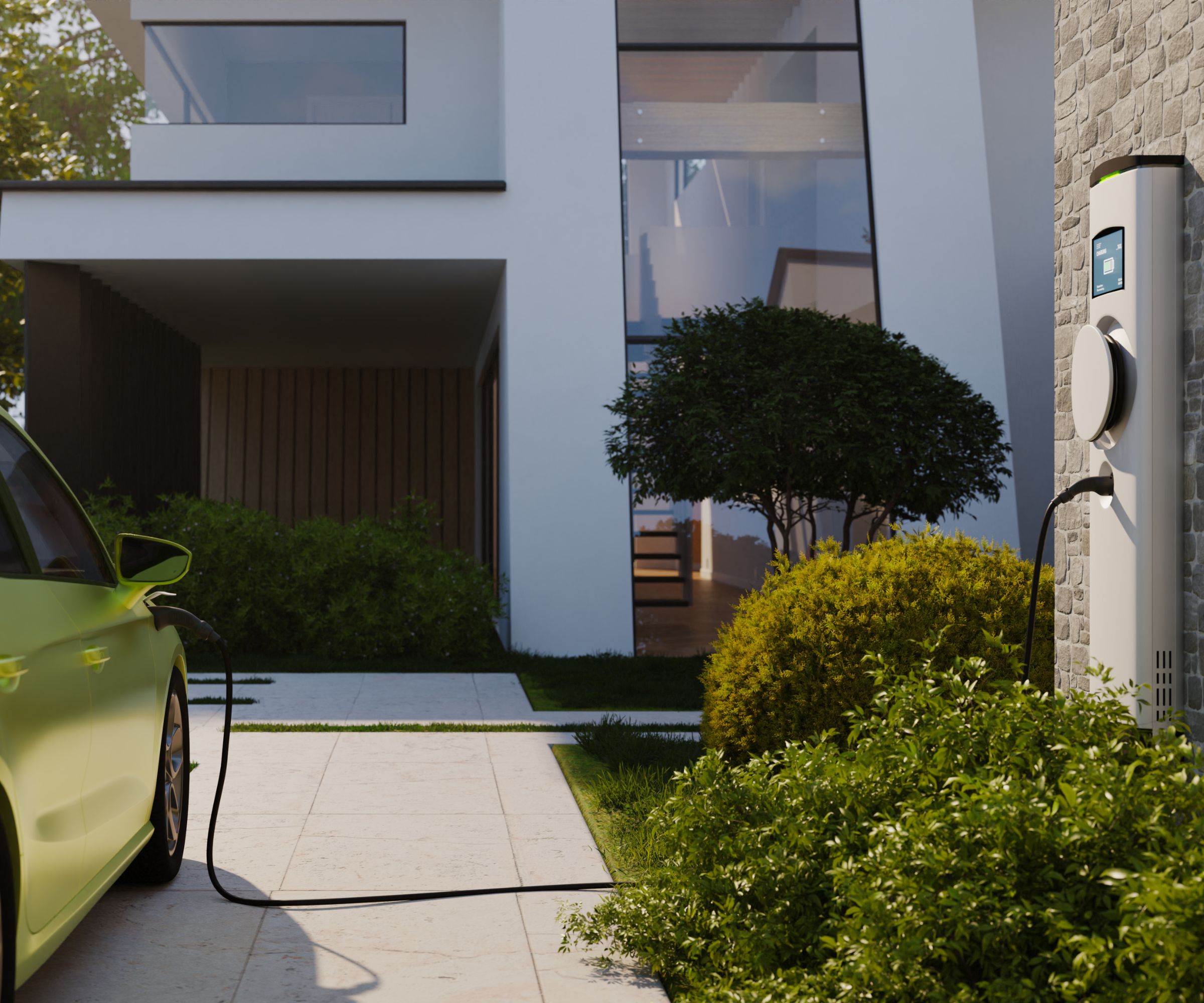
Installing a car charging point is not a task you want to DIY, nor should you cut any corners for the sake of saving money on home renovations to ensure safety. Luckily, installing a car charging point is not one of the most expensive home renovations, Jim O’Brien, electrician, and Leviton contractor marketing manager assure us.
He says, ‘The cost of installing a home EV charger can vary. On average, it ranges from $600 to $1,200 (based on your location) for a simple installation. However, if your home requires upgrades like a new electrical panel or wiring, the cost can rise to around $3,000 or more. It’s best to get a quote from a qualified electrician based on your home’s specific needs.'
The cost can also rise if the space you park and charge your car versus, where you can have the charging point fitted is far apart and needs groundwork such as trenching. This is when a groove is created in the surface of the road to bury the wiring and then repaved.
Check your home’s electrical system load limit
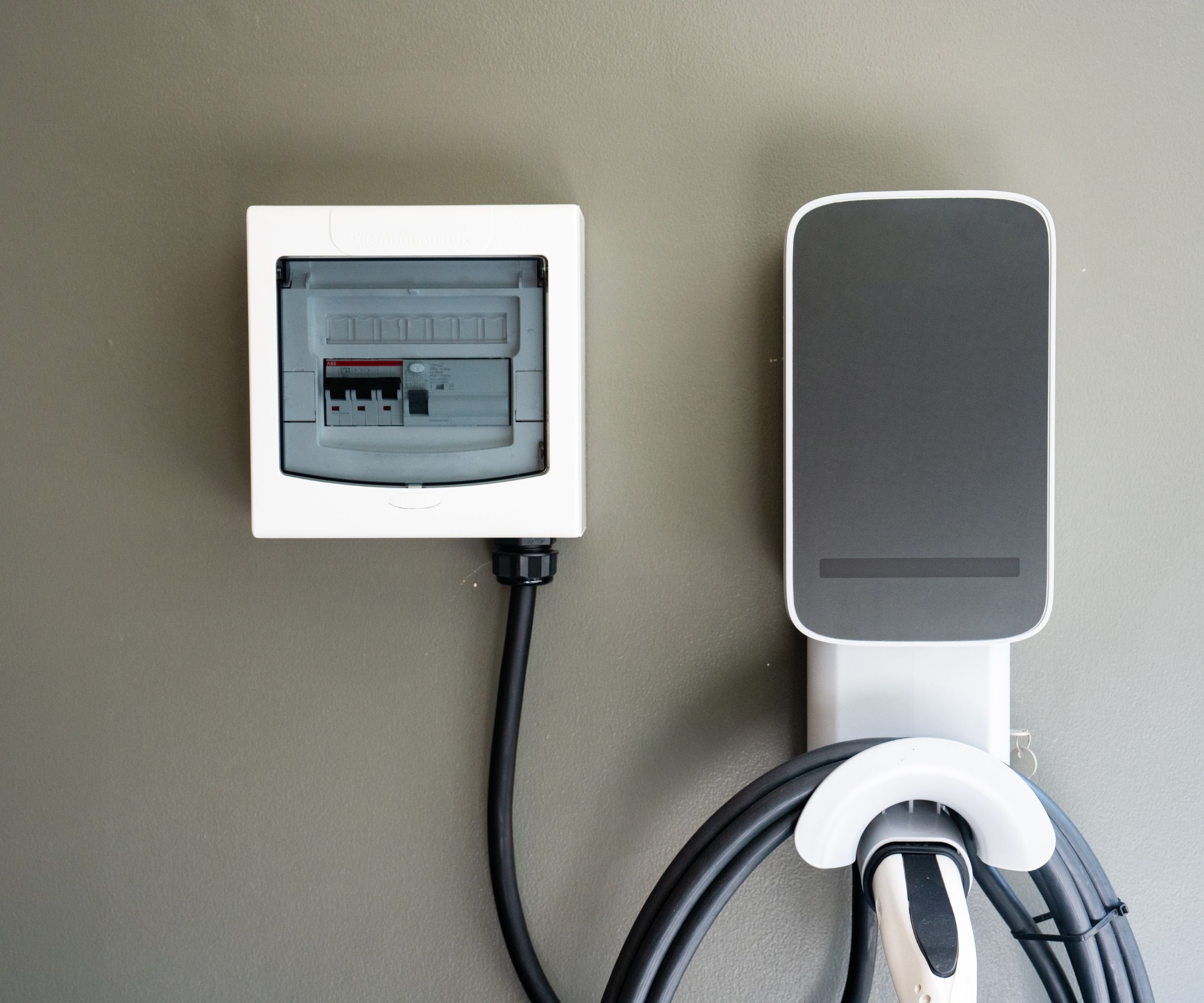
Speaking of home electrical upgrades, a car charging point will bring a bump in electricity use.
If your home’s current electrical system has a small load limit (dictating how much electricity can be used at one time before tripping the fuses to avoid a fire) then you might need to look at an upgrade and the costs to rewire a house.
Jim O'Brien, master electrician, continues, ‘With all the devices in your home (like appliances and HVAC systems), adding an EV charger can push your electrical system to its limit.
'Fortunately, 2023 updates to the National Electrical Code (NEC) allow for the installation of load management systems. These systems help balance the power in your home so you can charge your EV without overloading the system.'
The type of car charger you need
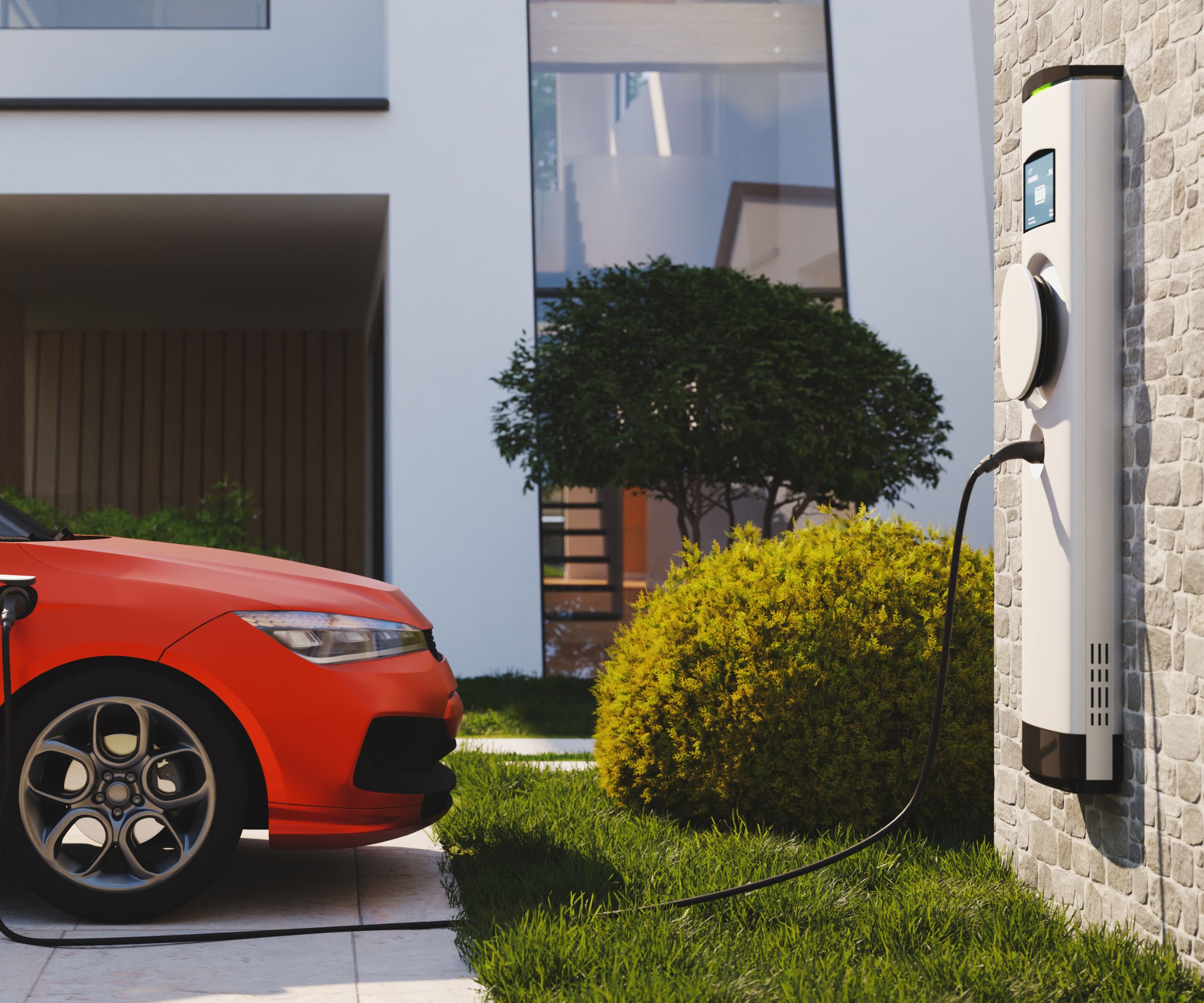
Picking a type of car charger for your home goes beyond the aesthetics and its impact on your curb appeal ideas. You need to pick a charger that is suitable for your car and meets specific safety regulations.
Joel Worthington, president at Mr, Electric, recommends that, ‘Homeowners should look for things like UL (Underwriters Laboratories) Certification. This ensures the charger meets safety standards. SAE J1772 Compliance means the charger is compatible with most electric vehicles in North America.
‘Level 1 chargers fit into a standard outlet. The charge is slower. Level 2 chargers allow for faster charging and are the common type of EV chargers installed in homes. The majority of EVs use an SAE J1772 connector.'
You can also pick between a fixed and non-fixed charger so if you change your car and it has a different charging type, you can afix a new charger wire to your unit.
Where to put a car charging point
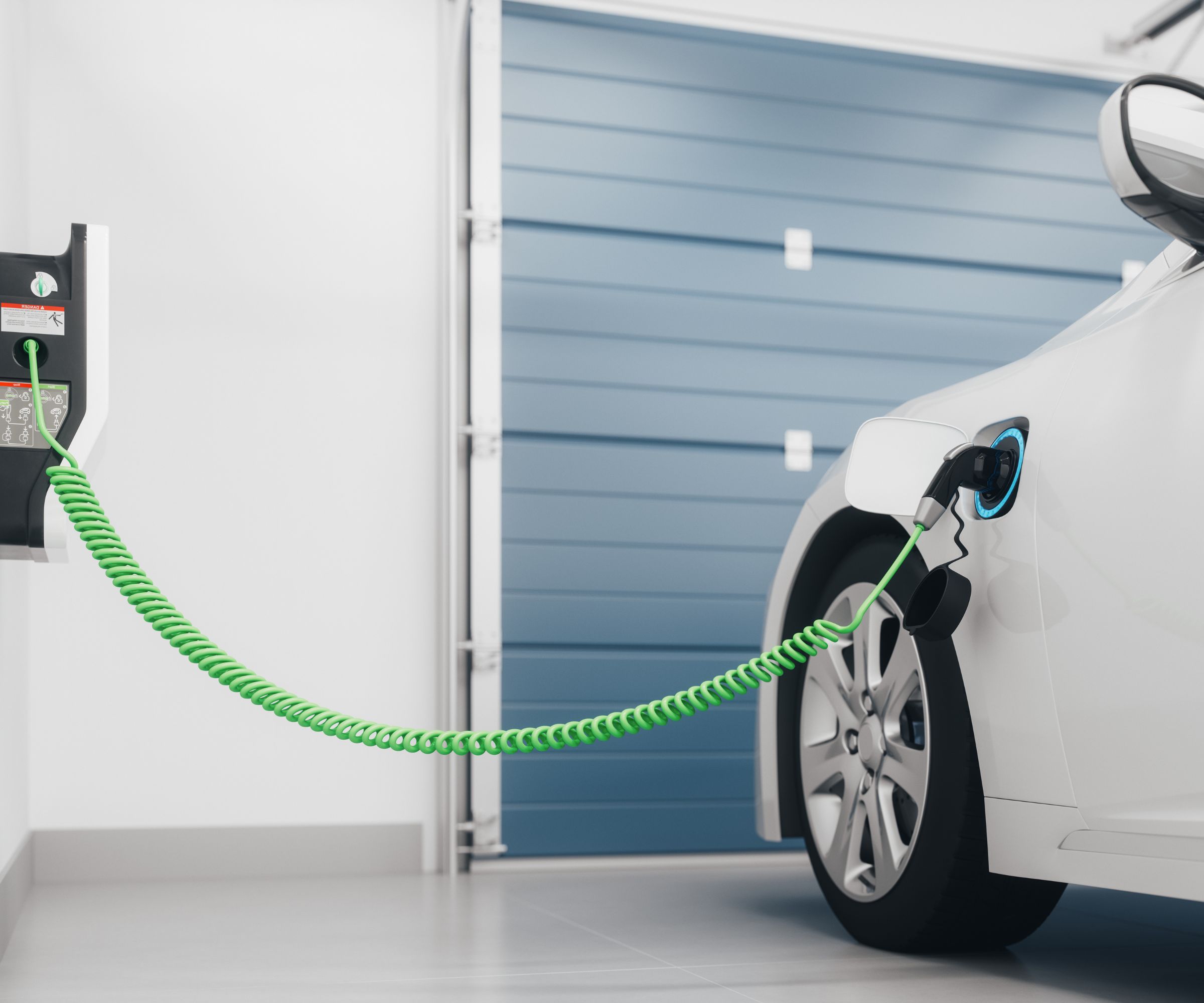
Where you put your car charging point depends on where you park your car, however there are several other important considerations that can determine your charging point’s final location in your driveway designs, says Ben Reubenstein, chief product officer at Emporia Energy.
For a start, the charging point needs to be close to where you park and close to your electrical panel, Ben begins. ‘Installing the charger far from your electrical panel can increase costs due to longer wiring and may lead to voltage drop, reducing charging efficiency,’ he says. ‘You also want to avoid locations that make it difficult to plug/unplug the charger, or places prone to obstacles (like crowded garages or driveways), should be avoided for user convenience and safety.
‘Outdoor installations require weatherproofing, and the charger should have a suitable NEMA rating,’ he begins. ‘Avoid placing the charger in spots that are fully exposed to rain, snow, or direct sunlight without adequate weatherproofing, as this can damage the charger over time.
'A high NEMA rating is needed for outdoor installations. That being said, chargers generate heat, and poor ventilation can cause overheating, reducing the charger’s efficiency and lifespan, and increasing fire risks, so be sure not to cover them entirely.
‘Finally, avoid installing the charger near flammable objects or materials, such as near gas meters, fuel storage areas, or wooden structures, as electrical equipment can pose fire risks.’
How much car charging points cost to use
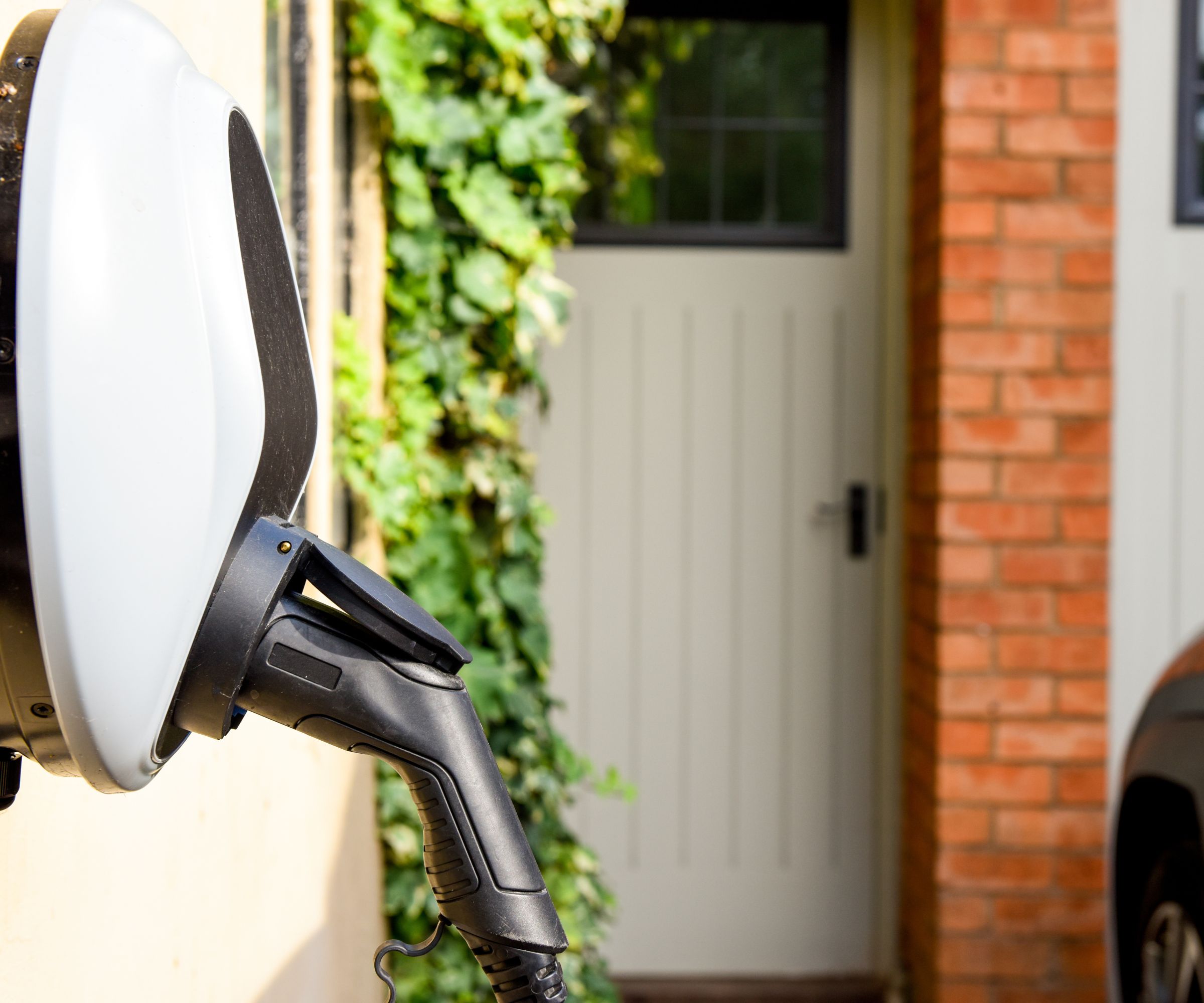
Of course, a car charging point is going to increase your energy bills, which with rising costs, is something you will want to consider before investing. Luckily, working out how much it costs to charge your car at home is not too dissimilar to working out how much it costs to run an electric heater, or costs to run an electric blanket, and there are ways to cut energy bills.
Jim O’Brien, electrician, says, ‘You can calculate your charging costs by checking how many kilowatt-hours (kWh) your vehicle uses per 100 miles and multiplying that by your utility rate.’
Joel Worthington, president at Mr, Electric, adds, ‘The amount will vary depending on the electrical rate, but generally, EVs cost around $30-$60 per month to charge.’
If you still want a charging point but are looking for ways to save money at home, Ben Reubenstein, chief product officer, suggests shopping around for variable utility providers, ‘Utility bills have varying costs across the country. It is important to have an understanding of your utility bill and to get a charger that will allow you to control it to match how you are charged for electricity.
‘For example, many people are on time-of-use utility plans where energy costs more during certain parts of the day. Picking a charger that lets you set your utility rate via an application, like the Emporia Classic EV Charger, will ensure that you only charge when energy is the cheapest.’
This might seem like a lot to take into account, but understanding all the intricacies of installing an electric car charging point before you take the plunge will make the installation process much easier.
If in doubt, consult a local installer for their advice, as they will be able to assess your home’s specific needs and help you decide on a type or charger and location that will work best for you.
Next learn more about how to make your home remodel more eco-friendly.
Sign up to the Homes & Gardens newsletter
Design expertise in your inbox – from inspiring decorating ideas and beautiful celebrity homes to practical gardening advice and shopping round-ups.

Chiana has been at Homes & Gardens for two years and is our resident 'queen' of non-toxic living. She spends most of her time producing content for the Solved section of the website, helping readers get the most out of their homes through clever decluttering, cleaning, and tidying tips. She was named one of Fixr's top home improvement journalists in 2024.
-
 How to grow sassafras – for a low-maintenance native tree that can even be planted in shady yards
How to grow sassafras – for a low-maintenance native tree that can even be planted in shady yardsFor an easy-to-grow North American tree, you will not find much better than sassafras
By Thomas Rutter
-
 'Big results before you know it' – Experts urge you to use the ‘Take Away 10’ method for simple decluttering with zero decision fatigue
'Big results before you know it' – Experts urge you to use the ‘Take Away 10’ method for simple decluttering with zero decision fatigueIt can cut hundreds of items from your home in just a few weeks
By Ottilie Blackhall
-
 The 3 bedroom renovations our home editors deeply regretted – and what they wish they’d done instead
The 3 bedroom renovations our home editors deeply regretted – and what they wish they’d done insteadSwap sorrow for success by avoiding what our editors learned the hard way
By Ottilie Blackhall
-
 Are you risking a fine with your home project? Expert contractors reveal how to check if you need a permit – plus 17 surprising upgrades that need permission
Are you risking a fine with your home project? Expert contractors reveal how to check if you need a permit – plus 17 surprising upgrades that need permissionContractors urge you not to make this dire misstep
By Chiana Dickson
-
 How to prepare your house for extreme weather – 10 future-proofing home upgrades to help keep your family safe and well in an emergency
How to prepare your house for extreme weather – 10 future-proofing home upgrades to help keep your family safe and well in an emergencyBeing prepared is protective for your home's longevity, security and safety
By Chiana Dickson
-
 7 money-saving tips you need to know before renovating your home
7 money-saving tips you need to know before renovating your homeOur experts share their insider knowledge for keeping your renovation costs down
By Ottilie Blackhall
-
 Pros reveal how to make a DIY saw guide for perfect straight cuts on any home renovation project
Pros reveal how to make a DIY saw guide for perfect straight cuts on any home renovation projectSay goodbye to unwanted wonky cuts forever
By Steve Jenkins
-
 4-week countdown – If you're mid-renovation like me, here's how I make my messy house presentable for the festive season, starting now
4-week countdown – If you're mid-renovation like me, here's how I make my messy house presentable for the festive season, starting nowWho's to say Christmas can't feel special in a half-finished renovation?
By Amy Reeves
-
 Yes, this is the right time to renovate your kitchen before Christmas – 4 DIY projects you can complete in the next few weeks
Yes, this is the right time to renovate your kitchen before Christmas – 4 DIY projects you can complete in the next few weeksFind out what updates are possible before Turkey time
By Amy Reeves
-
 The 7 quick, inexpensive and transformative jobs I'm doing to spruce up my guest bathroom ahead of hosting season
The 7 quick, inexpensive and transformative jobs I'm doing to spruce up my guest bathroom ahead of hosting seasonI decided to give my guest bathroom a makeover ahead of the festivities
By Natasha Brinsmead